Takao Kawaguchi Selection: Un Certain Regard
Yasunori Ikunishi
—The Standing Sticks: May Only I Live Long
The Standing Sticks: May Only I Live Long (59min)
- Headphones recommended to best experience the sound design in this video.
BUTOH Sunakku—Aftershow (45min)
Known for directing unique works with a focus on sound and space, Yasunori Ikunishi adapts texts written Tatsumi Hijikata into a theatrical piece. Words taken from Yameru Maihime and The Compassionate Soul Bird Comes To Unfurl Its Rustling Skeletal Wings are spoken by the performers, their voices resonating in the underground space.
Director Yasunori Ikunishi turns two texts by Tatsumi Hijikata into a theatrical performance. The words of Hijikata, uttered by two performers who barely move, mix with the silence and the sound of trains, reverberating round the underground space. Within, the bodies tremble, and their fluctuations are imparted to the viewers, creating a different experience and story for each. These “fluctuations” have carefully picked out through video and sound by Yasunori Kakegawa.
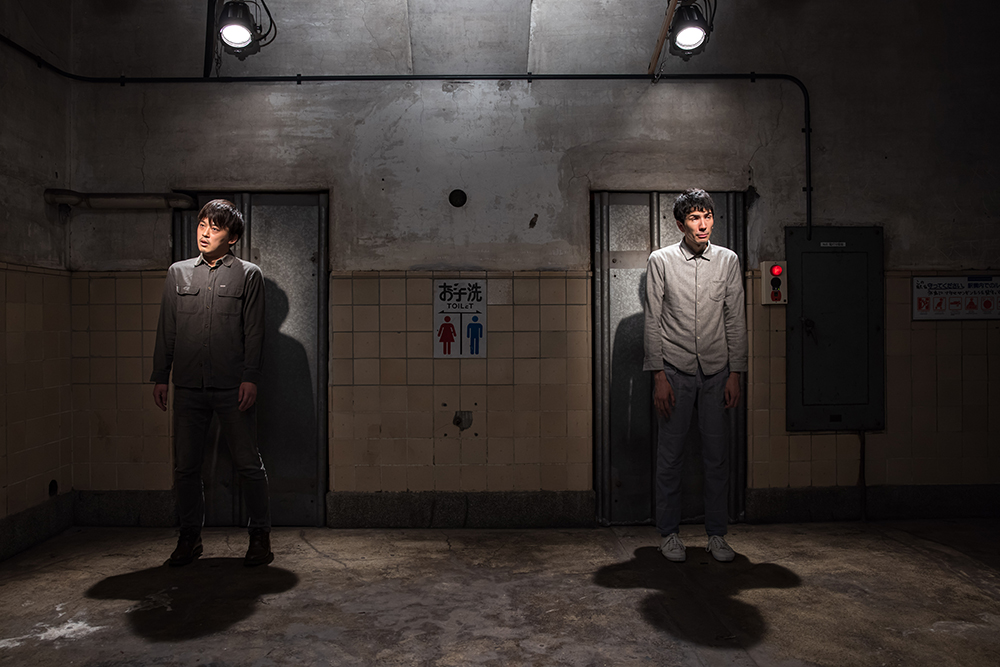
About Yasunori Ikunishi and the Artists
Videographer and VJ since the mid-1990s, Yasunori Ikunishi has produced video works with artists such as Keiichi Tanaami and Shinro Ohtake. He was also invited to participate as a VJ at the Rotterdam International Film Festival in 1999, 2000 and 2001. Since the 2000s, he has been producing video installations, and worked on dances, recitals and films with Sayoko Yamaguchi from 2003 until her sudden passing in 2007 along with Yasunori Kakegawa. Since 2008 he has also been directing theatre plays and dances, and in 2010 he produced a song and voice sound installation with a large group of people called Welcome Back, Song: Dusty Voices, Sound of Stars at the Ebisu Film Festival. He has been searching for ways to present the “here and now” through stage works and installations ever since. As of 2013, he is has been a lecturer at Bigakko teaching “things similar to theatre”. Ikunishi has directed this piece based on texts by Tatsumi Hijikata (1928–1986) at the request of TRU artistic director Takao Kawaguchi, who was “inspired by the way Ikunishi creates theatrical spaces”.
The performers are Brunoproduce founder and part of the duo y/n Kiyoshi Hashimoto, and Manabu Tomita, a 2018 graduate of Ikunishi’s Bigakko course.
The film director for this piece is Yasunori Kakegawa, a filmmaker who has worked on a range of works including commercials, music videos, documentaries, and films of stage performances.
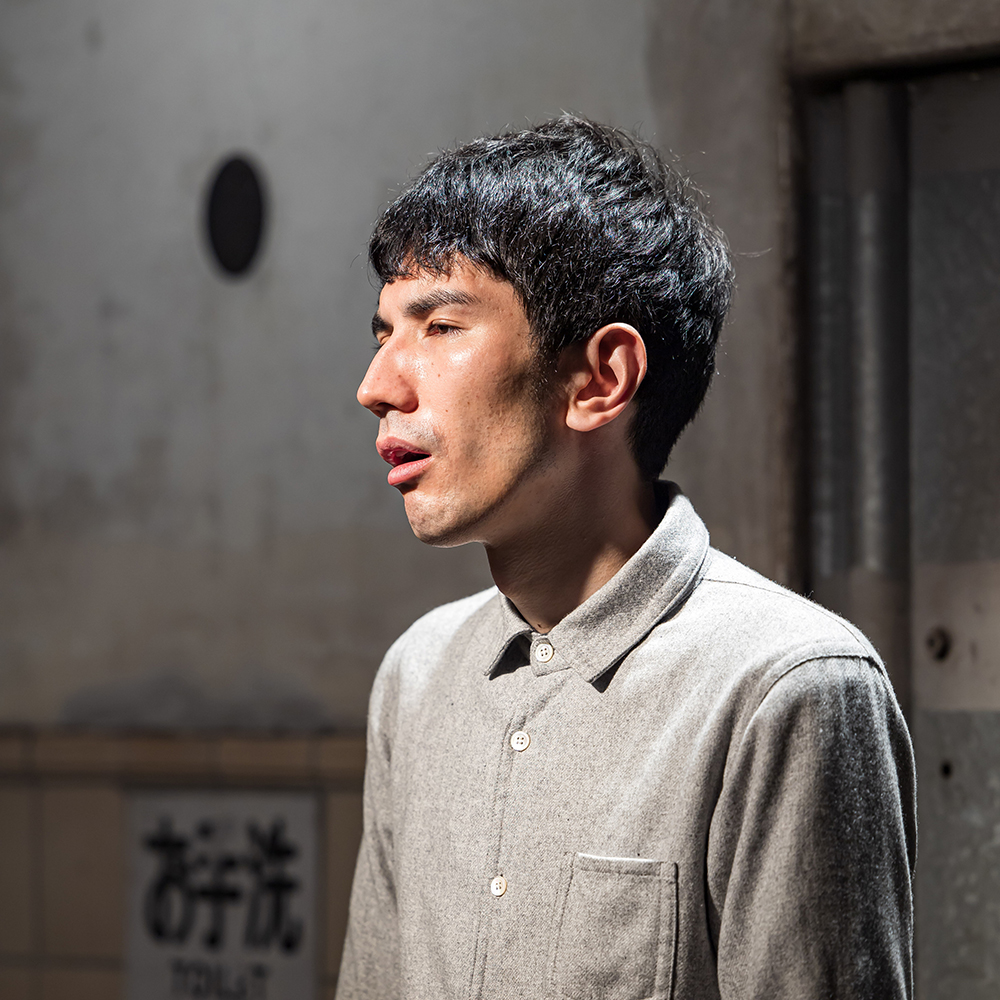
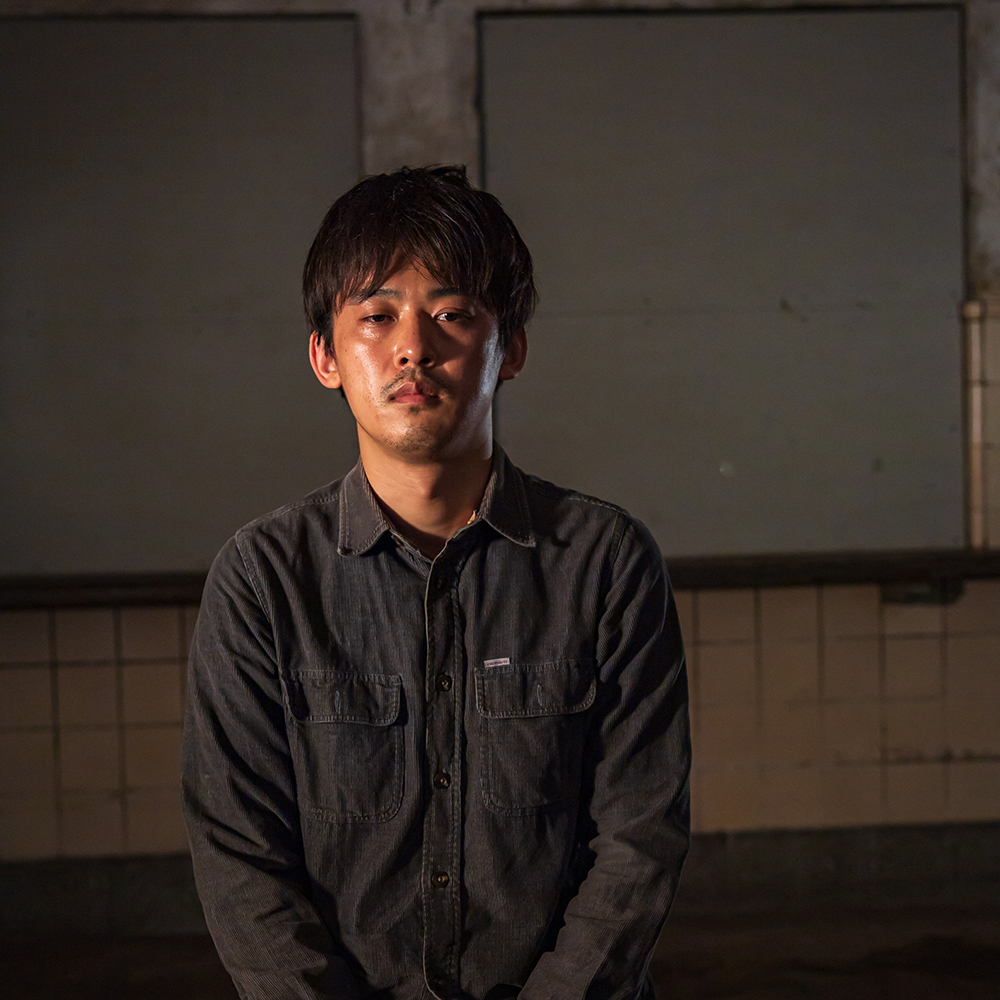
About The Standing Sticks: May Only I Live Long
This piece is performed in two settings. The text spoken in the first setting is Yameru Maihime, with The Compassionate Soul Bird Comes To Unfurl Its Rustling Skeletal Wings in the second.
The former was published in 1983, and is also known as Tatsumi Hijikata’s autobiography. The latter is taken from an LP record that was made based on transcriptions of words that Hijikata spoke in 1976, and given out after Hijikata’s funeral service (it has also been made into a book). This audio was listened to and written down by Tomita, one of the performers, and it is this text that has been used in this piece.

Hijikata’s texts, full of chaos and mystery with words that seem to run away from any kind of meaning, are voiced by two performers. For the first part, Tomita sits in a chair uttering Yameru Maihime while Hashimoto stands in the back as a “stick”, occasionally letting incompressible sounds leak out in reaction to Hijikata’s text and its images.
The sounds occasionally heard in this one-scene, one-cut footage are mostly the sounds of trains passing below the filming location, the Former Hakubutsukan Dobutsuen Station. In this old underground station, the sounds from above ground can also be heard, and the performers bodies blink, tremble and shake in reaction to these as well as Hijikata’s texts. In this underground space, you can hear the sounds of the ground, but the performer's body reacts to those sounds at the same time as Hijikata's text, blinking, trembling, and swaying. Although it seems as though they are barely moving, the two continue to react and transform. Ikunishi recommends watching with headphones, to better experience these changes.

Directors Notes
Having never previously managed to read through the entire of Yameru Maihime, a text full of multiple layers of twisted images, I wondered if it was possible to read it through the body of actors. My other intention was to see whether it was possible to project the more obscure “human existence” on top of the individuality of the actors’ bodies. This thought came to me while frequenting the garden of Takuzo Kubikukuri, who passed away in 2018. In that garden, there were moments where to hang one’s seemed in a sense theatrical, but for the most part it was just an old man walking slowly around the garden. I think a body that doesn’t attempt to reveal something definite better expresses a human existence that goes beyond the individual performers, in a way akin to the climax of a grand performance. Can actors use their bodies as blank canvases to present Hijikata’s text? What will the audience take away from this? These are the questions I would like to answer in this piece with director and actor Kiyoshi Hashimoto and performer Manabu Tomita.
Yasunori Ikunishi
Artist
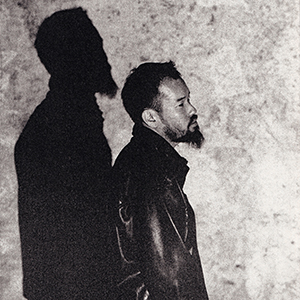 Photo by Yuriko Takagi
Photo by Yuriko Takagi
Yasunori Ikunishi
Yasunori Ikunishi has been working as a film maker and VJ since the 1990s. He worked on Sayoko Yamaguchi’s dance, reading and film performances between 2003–2007. Since the 2010s, he has become more interested in working in live spaces with an audience than film, and produced a sound installation Okaerinasai, uta in 2010 (Tokyo Photographic Art Museum). Today, he creates installations and directs stage productions. His main stage works are Kiseki no En (2017) and Hibi no Koen (2018). He has been teaching “things similar to theatre” at Bigakko since 2013.
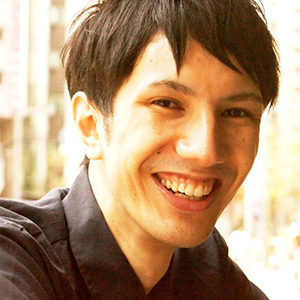 Photo by Natsuko Mikami
Photo by Natsuko Mikami
Kiyoshi Hashimoto
Born 1988. Director and actor. Graduated in drama from the Nihon University College of Art. Started Brunoproduce in 2007 while still at school, and received a scholarship 2012~2015. Recent productions include Keikan no Jama [Disturbing the Landscape] with Youth Group Link Kui in 2019, and The Little Match Girl with the Independent Youth Group Sakurauchi Projects in 2020. He performed in Naotoshi Oda’s play Es ist gut from 2016~2019. Since 2019 he has been working as part of a duo called y/n with dramaturg and critic Kenta Yamazaki. Their works include Coming Out Lesson (2020) and Sex / Work / Art (2021).
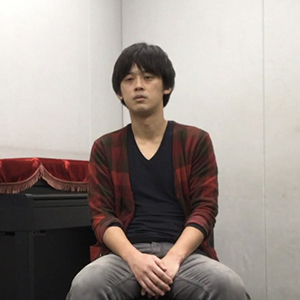
Manabu Tomita
Born 1981. Studied the 6th “things similar to theatre” at Bigakko in 2018. Been doing theatre ever since. Clerk.
Yasunori Kakegawa
Moderator
 Photo by Maiko Miyagawa
Photo by Maiko Miyagawa
Dai Matsuoka
Dai Matsuoka has been performing with Sankai Juku since 2005, and has appeared in some of their major works including Kinkan Shonen, Tobari, Unetsu and ARC. Director of LAND FES since 2011, a festival that invites the audience to watch music and dance performances as they walk around the city. He has been an instructor for the Scramble Dance Project in Odawara since 2018, in which both people with and without disabilities create dances together. He also runs BUTOH CHOREO LAB, an online platform with video lessons by high-profile Butoh dancers.
http://daimatsuoka.com
Credit
Texts
From Yameru Maihime and The Compassionate Soul Bird Comes To Unfurl Its Rustling Skeletal Wings by Tatsumi Hijikata
Performers
Kiyoshi Hashimoto(Brunoproduce, y/n)
Manabu Tomita
Composition & Direction
Yasunori Ikunishi
Film Director
Yasunori Kakegawa
Sound Recording
Tetsu Umehara
Film Crew
Masabumi Kimura
Fumimaro Ayano
Film Production in cooperation with
NPO LAND FES
Ryo Sakemoto
Yuta Tamanaha
Post Production
Yuto Niyama
Ryo Sakemoto
Film Coordination
Dai Matsuoka
Title Design
Kenta Suzuki
In cooperation with
“Mokohan Kakumei” Revival Project
Brunoproduce
Fumimaro Ayano
Mio Ishida
Stage management
Takashi Kawachi
Lighting
Noriyuki Mori (balance,inc.DESIGN)
Go Ogoma
Set
Go Ogoma
Sound
Noriaki Coda
Photography
Tatsuhiko Nakagawa
Tzvasa Wada
English Subtitles
Takao Kawaguchi, Mai Honda
Organisers
Tokyo Metropolitan Government
Arts Council Tokyo (Tokyo Metropolitan Foundation for History and Culture)
Planning and Production
NPO Dance Archive Network


